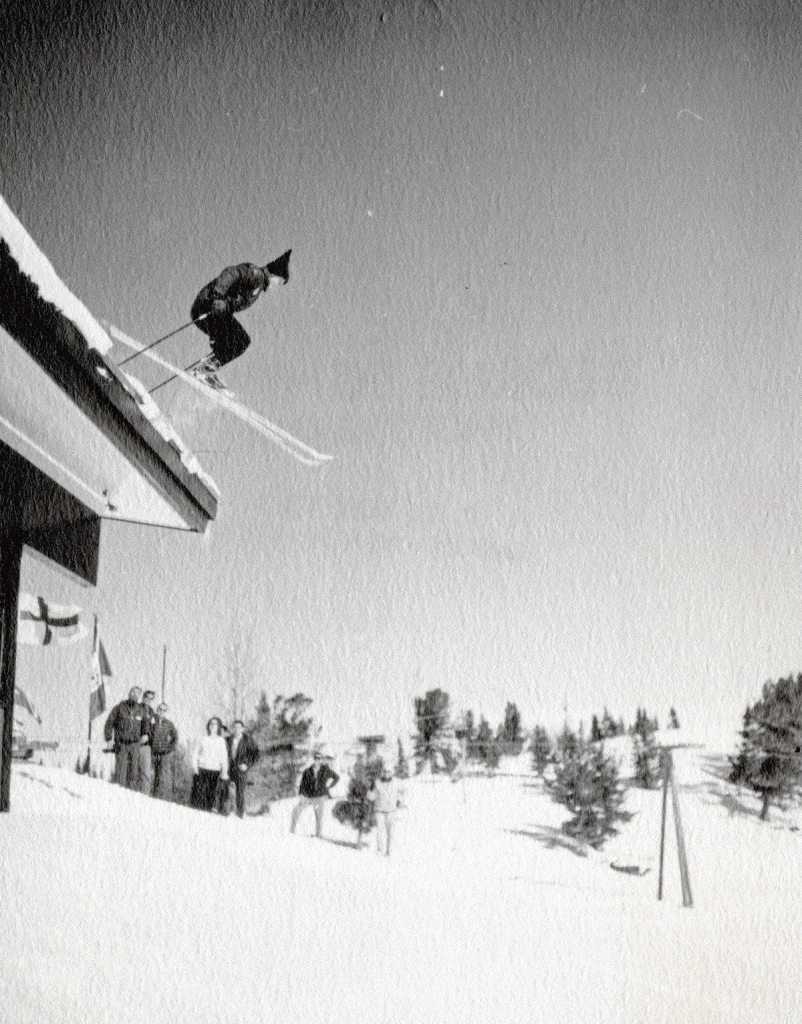Needless to say, Park City was a little different when I arrived as a pro ski patroller in December of 1963. If you approached town from Salt Lake City on the two-lane U.S. Route 40 (I-80 came years later), you turned onto SR 224 at the gas station at Kimball Junction. Coming into town, you would pass a few houses in Snyderville, including the current gift shop at the nursery and the Osguthorpe farm where you might have to wait for the cows to cross the road twice a day as they headed for the milking shed.
With the exception of Pop Jenks restaurant, the Street Conoco, and Johnny Fritch’s garage at the intersection of SR 248 and SR 224, Park City didn’t exist north of 15th Street. Main Street ended at Heber Avenue since the still operational Union Pacific RR tracks occupied what is the north portion of the street today.
All the essentials could be purchased on Main Street at the New Deal Market, Earle’s Market (now 350 Main), or Main Hardware, which stocked everything you could possibly need (if you could find it!). Traffic was minimal on the two-lane roads with no signal lights.
Affordable housing was plentiful. Two other patrollers and I rented the little mustard yellow house at the top of 8th Street for $25 a month (that’s three people splitting a $25 rent – not even $230 in today’s money). Snow Park ski area (lower Deer Valley) was still operating in the early 1960s with two rather primitive single chairlifts that ran on wooden lift towers. Treasure Mountains opened on December 21, 1963 with a 2.5-mile gondola, the Prospector chairlift, two J-bars, ten ski runs, the longest night skiing run in the U.S., and a nine hole golf course.
The next year they opened the most unique uphill transportation ever seen at a ski resort. The Skier Subway ran three miles through the Spiro drain tunnel into the center of the mountain and was followed by an 1,400 foot ride up the old Thaynes mine shaft. From there you rode on the new Thaynes chairlift to the top of the mountain.
This new chairlift provided restricted access to a great powder bowl. While not a legitimate run, it was frequently skied by the pro patrollers. At the time, if you were fired from your job, you got a blue slip. Woody Anderson, the resort manager, threatened the patrollers with a blue slip if they were caught skiing this bowl, which eventually became Blue Slip Bowl. Since the lift operator at the bottom of the gondola would call and let us know if Woody was on the way up, none of us got fired. When not skiing Blue Slip we would occasionally ski off the Summit House roof.

Credit: Park City Historical Society & Museum, Jim Tedford Collection
Grooming was done with two old Thiokol snowcats towing a piece of metal culvert. On a good day they groomed Claimjumper, Hidden Splendor, and Payday. There was no snowmaking in those days, so the season started when enough of the real stuff had accumulated. There were seven pro patrollers and seven full time ski instructors the first year of operation. The ski school, run by Jim McConkey, charged $5.00 for a full day ski lesson. An all-day lift pass cost $4.50.
Après ski entertainment was pretty limited. For immediate satisfaction, a visit to the Rusty Nail bar at the base lodge was your best bet for a quick 3.2 oz beer, the only alcohol available. In the evening you could dance, drink a little beer, and watch the go-go dancers at the Silver Palace (now Chimayo) or the Gold Digger (now Java Cow). You could also have a beer (but no pizza) at Red Banjo or watch the strippers at the C’est Bon. The Shenandoah Singers played folk music at the Prospector Lodge (now Grappa). If you wanted to see a movie you had to visit the Avon or the Ideal theaters in Heber. Park City was pretty casual in the early 1960s. The amenities may have been limited but the snow was plentiful, the guests were few, and the rest you knew.